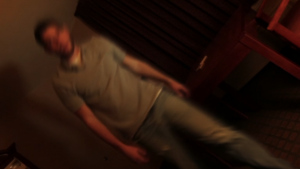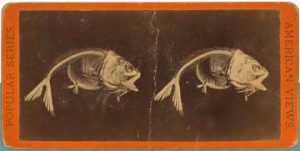I have to admit that I was never into poetry until I decided to take a creative writing course that involved writing poetry. Nevertheless, I became intrigued after learning poetry is about word play and using words to create sound effects by using alliteration, and assonance. During this semester I learned about kinetic and interactive poetry and how digital poetry can be use on digital platforms such as Twine. I teamed up with Joel because his knowledge of Twine is far superior than my own.
Joel and I came together and started brain storming ideas about the themes we wanted to explore. We settled on writing about human emotions, and how these emotions can cause one to feel isolated, as well as turn violent. We wanted the poems to loop, by creating an infinity cycle of birth and death, like Ouroboros. We chose certain words within poems to shake to signify violence. We knew with Twine we could create effects with words we would not able to on the printed page.
The process of coming up with poems to fit the themes we wanted was a bit of a problem. I had asked to see the poems that Joel was working on to see if I could come up with the poems we needed to help complete the infinity cycle. I noticed the word, “virtuous” and then I wrote a poem, Vindicator (in five minutes) about a violent man who was boastful and fearless in battle. I used alliteration to help create the hard “v” sound in the poem. When the poem is read aloud, reader/users can really hear the hard “v” sound effects.
I added an abstract poem about love to help complete the circle. I wanted the show the effects of love and how it could be abused and be used to destroy. The hard thing was writing a poem that could show and not tell. I also did not want the poem to beat the users over the head with what I wanted the poem to convey. I purposely did not include the word love in the poem to allow the users to wonder what force could build and destroy, as well as be abused.
Twine allowed Joel and I freedom to experiment with words and manipulate them like objects, so the users are not only reading the poems, they are also watching and interacting with the poem instead of reading stationary words. The black backdrop on Twine worked perfectly for my poem, Black Flower. It helped accentuate the poem’s theme of isolation and despair.
Tom Swiss’s Shy Boy was an inspiration to me. After reading it, I knew I could also use a digital platform to express myself through poetry. I did not want to copy Swiss’s style of kinetic poetry but wanted to do something different with interactive poetry. When I teamed up with Joel for the Twine project, I knew we could use the platform to create digital poetry. I hope the user enjoy the work that Joel and I created, because I enjoyed creating it.
http://philome.la/joelmcummings1/e-literature-dtc-338-110/play











